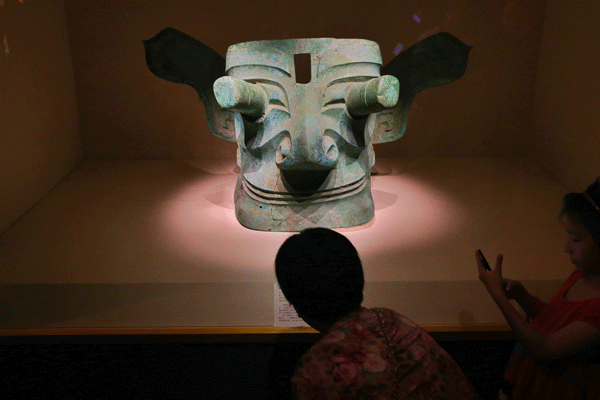

Exquisite artifacts found in the 1980s at the Sanxingdui archaeological site in Southwest China's Sichuan province unveiled the face of the ancient State of Shu that could date to the early 18th century BC.
Further excavations at the nearby Jinsha and Qingyanggong relic sites provided modern scholars more evidence of the kingdom's emergence, development and gradual extinction in the mid-second century BC.
These enthralling objects meanwhile, bearing mysterious patterns, aroused both wide interest in and arguments over the messages they are carrying, especially when very few historic records about the State of Shu have been found, except for some brief folk tales.
The findings and myths surrounding the ancient Shu culture are shared in Beijing at The Splendid Ancient Shu Civilization, an exhibition at the National Museum of China through Sept 19.
It brings together a selection of the finest examples unearthed from the Sanxingdui, Jinsha and Qingyanggong sites, which are loaned from nine museums and archaeological institutions in Sichuan.